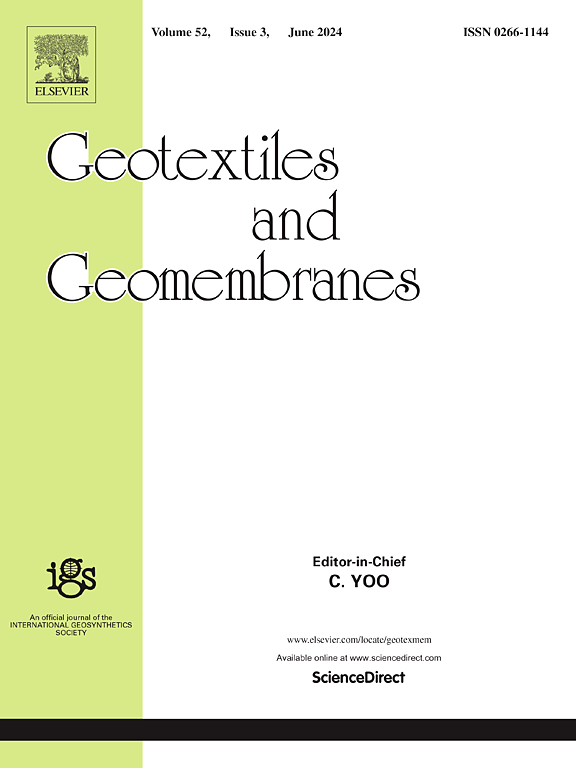Microstructural characteristics and prediction of hydraulic properties of geotextile envelopes via image analysis and pore network modeling
Abstract
In this study, the microstructural characteristics of geotextile envelopes were investigated via two-dimensional (2D) and three-dimensional (3D) image analysis. A pore network model was constructed to predict the hydraulic properties of the geotextile envelopes. Based on image analysis, the representative domain size of the geotextile envelopes was estimated and was further confirmed by pore network modeling. The results showed that while nonuniformity existed in geotextile envelopes, no noticeable difference was observed in porosity among samples of different sizes. The porosity derived from 3D image analysis was much closer to the theoretical value, with relative error less than 12%. The fibers of the geotextile envelopes were mainly distributed in the in-plane direction and were nearly uniform. The prediction of the permeability coefficient was optimal when hybrid cones and cylinders were considered as the geometric shapes and when the equivalent diameter, inscribed diameter, and total length were used as the geometric properties of the extracted pore network. The capillary pressure curves matched experimental values more closely when using the equivalent diameter for throat diameter. The representative domain size of geotextile envelopes was at least 3500 μm, but no meaningful length could be found along the through-plane direction.

 求助内容:
求助内容: 应助结果提醒方式:
应助结果提醒方式:


